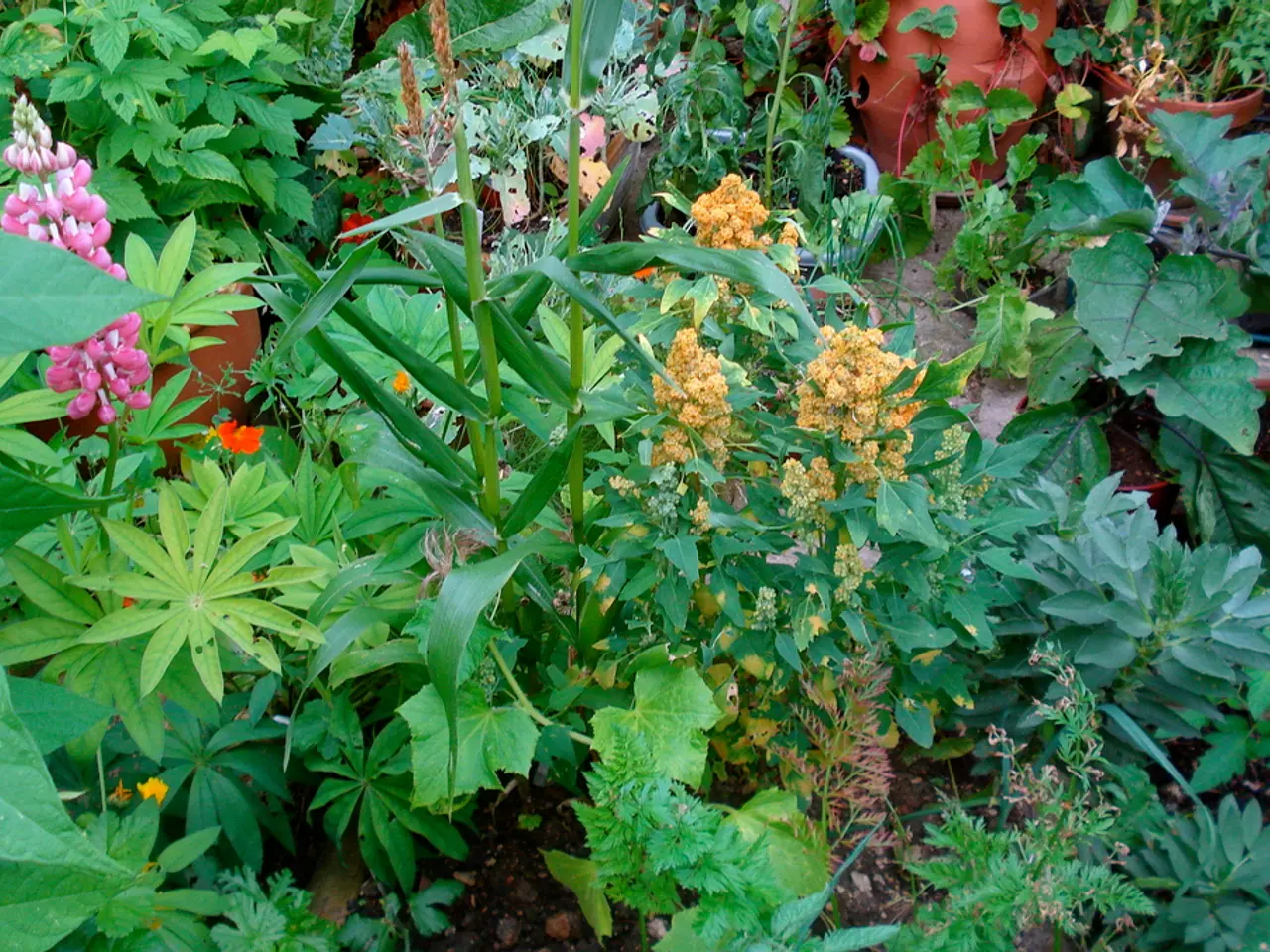Cultivating and Nurturing Roma Tomatoes: A Comprehensive Guide
Growing, Caring for, and Harvesting Roma Tomatoes: A comprehensive Guide
Roma tomatoes, known for their small, plum-shaped, and bright red fruits boasting an exceptional flavor, are an ideal choice for both novice and experienced gardeners alike. These versatile summer crops can be cultivated outdoors or under cover, in pots or the ground.
Understanding Roma Tomatoes
Roma tomatoes, prized for their few seeds and robust flavor, are excellent for making sauces, ketchup, and preserving. These frost-tender plants typically last for one growing season and may reach up to 1.5 meters tall with a spread of 50cm.
How to Grow Roma Tomatoes
Roma tomatoes can be grown either from seeds sown in a heated propagator from late winter to early spring or from young, ready-grown plants. For best results, transplant the seedlings or bought plants into larger pots, eventually growing them in individual large pots, growing bags, or directly in the ground. Provide support as they grow and regularly water, fertilize, and care for the tomatoes to encourage healthy growth.
Optimal Growing Conditions for Roma Tomatoes
Roma tomatoes thrive in full sun exposure and a sheltered spot outdoors or in a greenhouse or polytunnel. While Roma tomatoes grow tall, their relatively small spread makes them suitable for even smaller spaces.
Plant Roma tomatoes outside only after the last frosts have passed, in late May or early June, in fertile soil or potting compost that is well-draining and rich in nutrients.
Caring for Roma Tomatoes
Watering is crucial for Roma tomatoes. Ensure a consistent, even supply of water to prevent nutrient deficiencies, smaller fruit, and split fruits susceptible to grey mould. Feeding also plays a vital role in enhancing crop quality and quantity, with a specific tomato fertilizer being most effective. Pruning is not typically necessary for Roma tomatoes as they are semi-determinate or bushy types.
Pests and Diseases
Roma tomatoes are prone to various pests and diseases, though careful attention to growing conditions and early intervention can help mitigate issues. The most common pests include aphids, whitefly, and red spider mites, while late blight, black spots, and fruit disorders such as sun scald and green back may occur under unfavorable conditions.
When to Harvest Roma Tomatoes
Roma tomatoes are typically ready for harvest around 70 to 90 days after transplanting. Look for a deep red color and a slight softness when gently squeezed. Roma tomatoes can be enjoyed fresh or used in a variety of culinary applications due to their seedlessness, making them ideal for sauces, canning, and preserving.
Buying Roma Tomatoes
Those who prefer to avoid growing their own Roma tomatoes can buy seeds or ready-grown plants from reputable suppliers, such as Crocus, Thompson & Morgan, or Van Meuwen. Always inspect plants for signs of damage or disease before purchase.
Best Practices for Growing, Caring for, and Propagating Roma Tomatoes
To ensure a successful Roma tomato crop, follow these best practices. Roma tomatoes require full sun exposure, well-draining soil rich in nutrients, adequate water, and consistent feeding. Mulching can be beneficial for moisture retention and temperature regulation. Prune unnecessary growth late in the season for optimal airflow and fruit exposure. Proper care and attention can reduce pest susceptibility and prevent diseases.
When propagating Roma tomatoes, sow seeds indoors 6-8 weeks before the last frost date. Transplant seedlings after hardening off outdoors, ensuring good air circulation, proper spacing, and the right temperature and light conditions.
By following these best practices, cultivating, caring for, and harvesting Roma tomatoes can yield productive, healthy plants loaded with delicious, flavorful fruit.
Companion planting can help improve the growth and health of Roma tomatoes by implementing crops such as basil, marigolds, or parsley which attract beneficial insects and repel pests, while avoiding plants like potatoes and eggplants that are known to hinder tomato growth.
Gardening isn't just about growing Roma tomatoes; it also enriches one's lifestyle by cultivating a home-and-garden space that are not just aesthetically pleasing, but also beneficial for one's physical and mental well-being. Additionally, the process of growing Roma tomatoes can become a rewarding hobby that promotes self-sustainability and nutritious eating habits.








